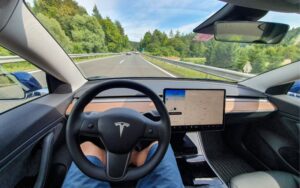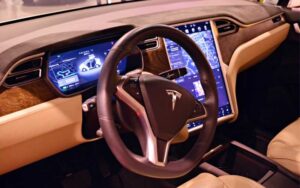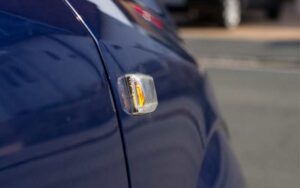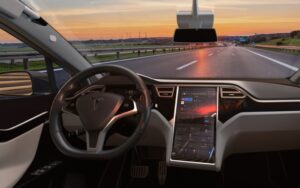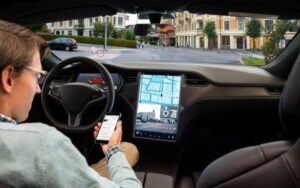Tesla Vampire Drain: Myth, Mystery, Or Real Concern?
Last updated on September 21st, 2023 at 09:41 am
Most Tesla owners have complained about the rapid depletion of their batteries when not in use. Unfortunately, this problem is not exclusive to Tesla alone; it also affects other vehicles.
Because this battery depletion occurs at night, many now call it a vampire drain.
The problem stems from the gap between the high current demand and the low storage capacity of batteries.
Fortunately, you can stop or reduce this by adjusting the settings. Let’s see how.
A Tesla vampire drain refers to the vehicle’s battery loss when not in use. Some electronic components in today’s vehicles, both ICE and EVs, are always on, even while the vehicle is parked. Depending on the vehicle’s level of sophistication, these might incorporate alarm systems, FOB detection, timers, and more.
This article discusses how the vampire drain affects your Tesla model, the effects, and how you can reduce it.
What Is a Tesla Vampire Battery Drain?
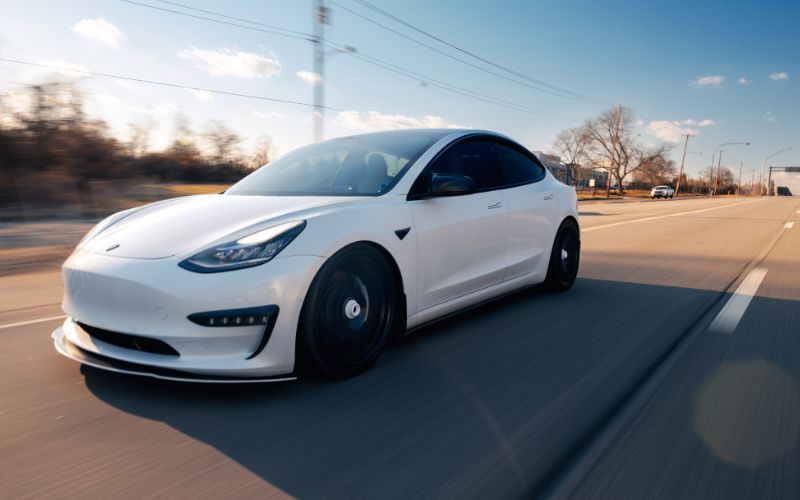
A Tesla Vampire battery drain refers to the gradual and unnoticed discharge of your Tesla battery while parked and not in use; there is often more than one cause for vampire drain.
Built-in mechanisms like battery temperature regulation, status monitoring, and Sentry Mode (theft prevention), among other things, might cause the battery to run down.
There is also the possibility that third-party applications drain batteries by constantly pinging the vehicle.
Applications and systems will draw power from the battery, whether built-in to the device or downloaded from the internet.
Several applications will need to ping it regularly to determine the state of an electric vehicle like Tesla.
In-car systems that monitor the vehicle’s surroundings, such as the Sentry Mode, get their power from the vehicle’s battery.
If it is not a source of continuous charging through a wire, many little draws of power from the vehicle’s battery might impact its range.
Do All Tesla Experience Vampire Drain?
Yes, most Tesla models experience Vampire Drain. However, this depends on the vehicle’s settings.
This might range from a few miles each day to very large amounts, and it can also be an issue if you leave your car while on vacation.
Every model produced by Tesla has a large number of computer systems that perform a variety of purposes.
Examples of what can be done with this feature include monitoring the battery’s state and checking to see if Tesla is attempting to connect to the car wirelessly.
You can also prepare to unlock the doors when you walk up to the car or activate Sentry Mode to record anyone who comes close to your vehicle.
Depending on what you want the car to accomplish while you are gone, many computer systems can be active even while the vehicle is parked.
And there is a balance between the variety of tasks completed and the amount of electricity your Tesla model uses.
Is Vampire Drain Dangerous for Tesla?
Most times, the battery power loss is rather little over a short period. Also, since many people plug their devices in to charge while they sleep, they are unaware of the effect of vampire drain.
Despite this, over a year, it can accumulate quite a significant quantity of energy.
Sentry Mode alone can use more than 500Kwh per year. That might result in an additional cost of up to $200 or £200, depending on how much you pay for power.
However, a Tesla vampire drain becomes more evident when your Tesla is left unplugged for more than a few days.
For example, you can leave your Tesla at an airport long-term parking lot while on a journey.
However, poor settings may cause Teslas to lose two to three percent of their battery power daily.
At this rate, your car may lose 50 percent of its battery power after a trip of just 14 days!
The good news is that you can reduce to under 0.5 percent daily and as low as 0.1 percent if the appropriate settings and automobile usage are used.
What Is the Average Vampire Drain on a Tesla?
The average vampire drain on a Tesla is five to fifteen kilometers of range over 24 hours daily, and this could also last over longer hours in a month.
However, depends largely on your Tesla model, its battery, the active systems, the number of applications that ping the vehicle, and the frequency with which they do so.
This fact became evident when a Tesla and a Chevy were put through battery vampire drain tests by the automotive professionals at Recurrent Auto in 2020 and 2022.
Both were brought to the same level of charge, parked in the same position and left for 18 hours without being touched.
Results showed that applications pinging the car more often or more frequently, such as every hour, greatly influence the vehicle’s range.
For Teslas, third-party applications had a very significant influence.
Consequently, it lost between 5 and 15 kilometers of range over 18 hours, even though this number fluctuated depending on how often the system was pinged.
The table below shows the result of a vampire drain test for some popular Tesla models.
| Model | Year | Loss with Sentry on | Loss with All Systems off |
|---|---|---|---|
| Model Y LR | 2022 | Untested | 1.2 miles per day |
| Model S LR | 2022 | 32.3 Miles per day | 2.6 miles per day |
| Model 3 | 2018 | Untested | 1.6 miles per day |
Does Tesla’s Vampire Drain Issue Relate to Their Batteries?
Tesla’s vampire drain issue does not directly relate to their batteries. Vampire drain refers to the slight power loss that occurs when an electric vehicle is idle, and it occurs due to the various electrical systems active in the vehicle. However, it is important to note that Tesla’s batteries play a crucial role in managing and minimizing vampire drain, as their advanced battery management systems help optimize power consumption. Therefore, while the vampire drain issue is not directly caused by the batteries, Tesla’s battery technology plays a significant role in addressing and mitigating it. For more information on tesla batteries explained, consult official Tesla resources or expert analysis.
How to Reduce Vampire Battery Drain on Your Tesla?
Unfortunately, you cannot completely eliminate the vampire drain on your Tesla. However, if you leave it unchecked, it could result in problems for you and your car.
You can use the following strategies to reduce your Tesla vampire drain:
#1. Disable the Sentry Mode
Sentry Mode is responsible for a significant portion of most battery drains in the Tesla Model.
Due to this function, your Tesla’s cameras will remain active even while the vehicle is parked, as it will begin recording if it detects anything out of the ordinary.
In addition, Sentry Mode prevents your Tesla from entering a sleep state, even though it might significantly enhance overall vehicle safety.
So to prevent vampire drain, it should only be used when necessary and shut off after parking your vehicle securely.
Here are two ways to it off:
- On the touchscreen: Navigate to the Controls menu, choose Safety & Security, then Sentry Mode. Adjust the on/off switch.
- Using the Tesla mobile app: Go to the Security menu, choose Sentry Mode, and turn it off.
#2. Avoid Using Third-Party Applications
There is a risk that applications like Tesla’s and third-party applications can drain your battery. Pinging it for information throughout the day will let them keep your Model 3 awake.
You can examine your programs’ configuration options to see whether they include protection/security against vampire drain.
Many users have thought of methods to prevent the app from rousing your Tesla Model 3 when in a sleep state.
You can also try turning off all of your third-party apps for a time and discern if that makes a difference in how long your battery lasts.
If it does, try reintroducing your apps one at a time to find one that consumes a significant amount of power.
#3. Disable Smart Preconditioning
Your car automatically detects your schedule when you enable the smart preconditioning feature.
Thus, when you leave your home, it begins preconditioning your vehicle every day for a few minutes.
The main concept behind this is saving you time and energy. This function is extremely beneficial if you live in a cold environment.
However, if you intend to leave your vehicle idle for a few weeks or months or have a vampire drain regularly, switch this option off to avoid more battery draining.
This feature is very helpful if you live in a cold climate.
Below is a procedure to switch it on or off:
- Navigate to the Settings menu, then choose Vehicle.
- Select Climate and Smart Preconditioning.
- Finally, select the on/off switch.
#4. Disable the Smart Summon Standby Mode
You should turn off the Smart Summon Standby Mode if you don’t plan on using it often.
Standby Mode maintains your car on standby, keeping it from going into a sleep state since it is always ready to respond to a need for assistance at any moment.
The following is the procedure to deactivate it:
- To turn off the autopilot, go to Controls > Autopilot > Standby Summon > Off.
- Turn Off the Car Alarm
Even while a car alarm is vital for the safety of your electric vehicle, it is also responsible for consuming at least one percent of the battery daily.
This may not seem significant, but it can add up to an extremely large amount over time.
Consider turning off the vehicle’s alarm system if it is in a secure location. The security alarm can be turned on and off by touching the Controls.
#5. Disable the Wi-Fi
Your vehicle won’t be able to sleep if it has access to Wi-Fi, which is particularly problematic while downloading software updates and will cause excessive vampire drain.
Before leaving your vehicle, double-check that the Wi-Fi connectivity has been off. It is really simple to do from the screen.

Hey, I’m Michael Davis, a 35-year-old with a degree and a love for cars and tech. Since I was a kid, cars have been my thing—so much that I even thought they ran on magic beans! Fast forward, and I’ve built Vehicle Army, your one-stop-shop for easy-to-understand car facts.

